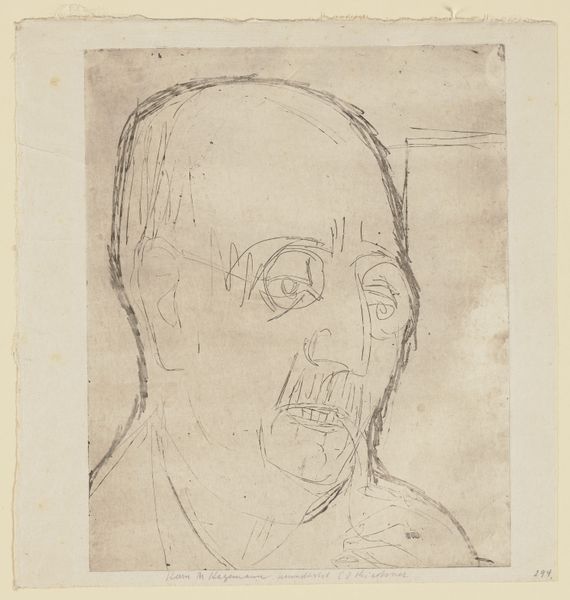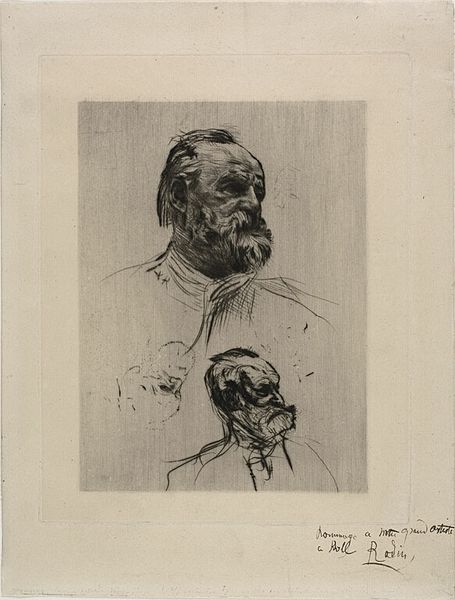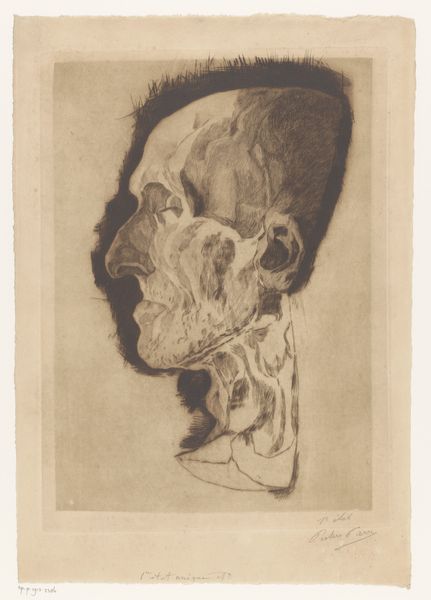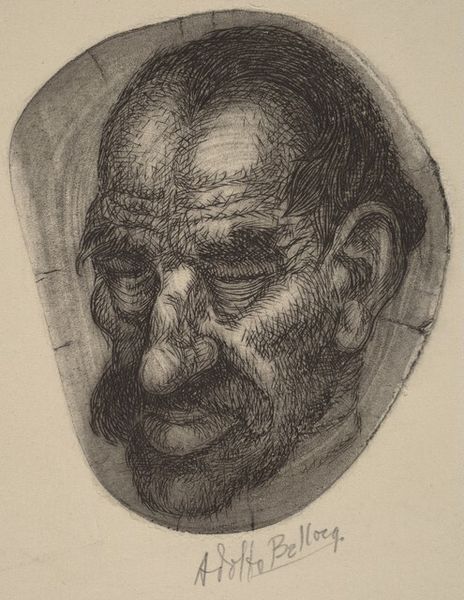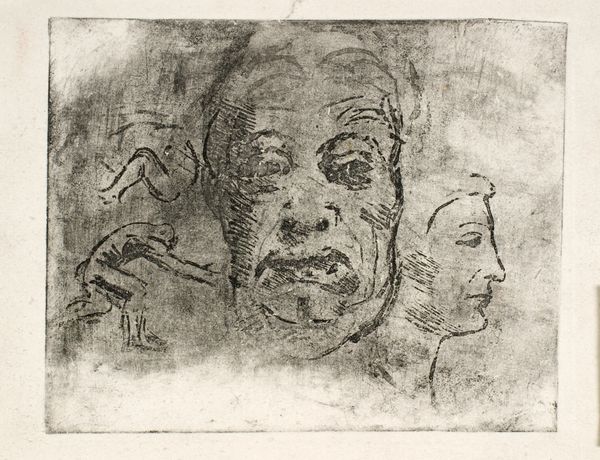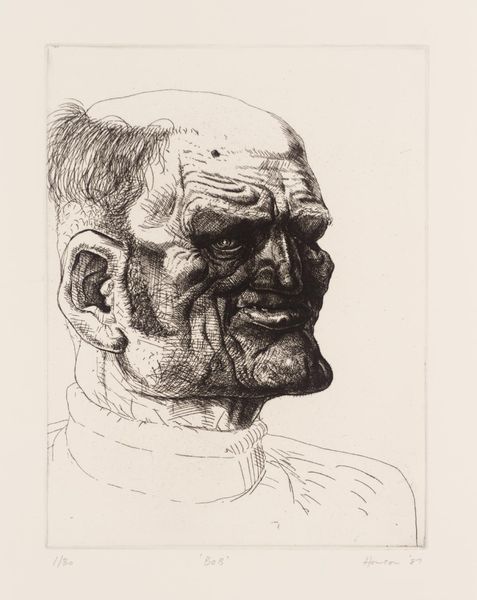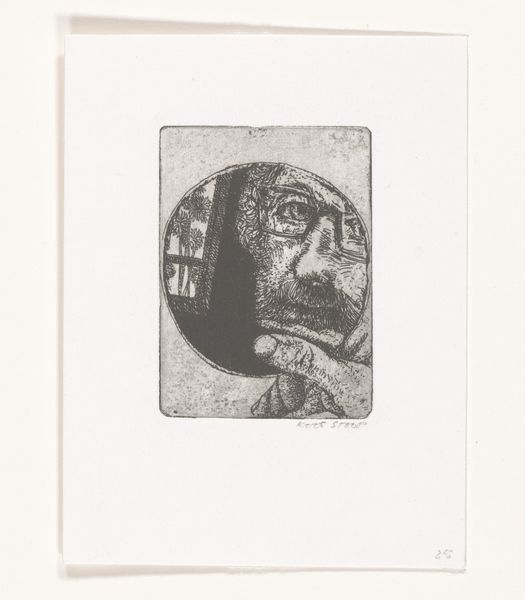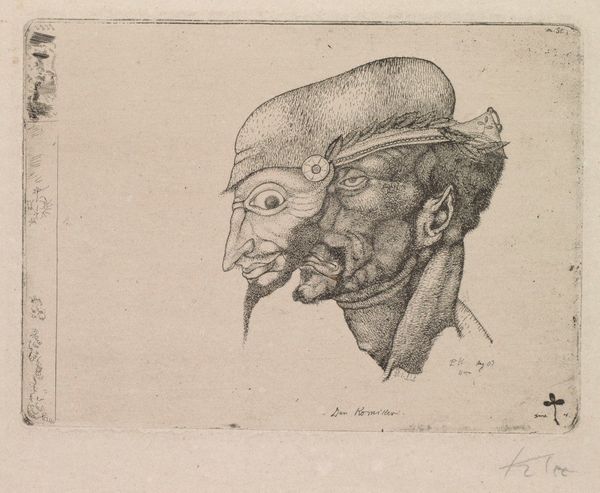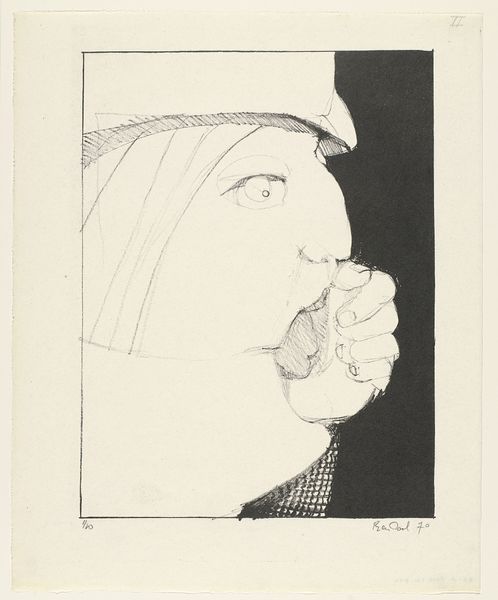![Perseus (Der Witz hat über das Leid gesiegt) [Perseus-The Triumph of Brain over Body] by Paul Klee](/_next/image?url=https%3A%2F%2Fd2w8kbdekdi1gv.cloudfront.net%2FeyJidWNrZXQiOiAiYXJ0ZXJhLWltYWdlcy1idWNrZXQiLCAia2V5IjogImFydHdvcmtzL2UxMzdhMGUxLTAxN2EtNGRlZi1hMTk5LWQyM2Q5NGIzZTRmMS9lMTM3YTBlMS0wMTdhLTRkZWYtYTE5OS1kMjNkOTRiM2U0ZjFfZnVsbC5qcGciLCAiZWRpdHMiOiB7InJlc2l6ZSI6IHsid2lkdGgiOiAxOTIwLCAiaGVpZ2h0IjogMTkyMCwgImZpdCI6ICJpbnNpZGUifX19&w=3840&q=75)
Perseus (Der Witz hat über das Leid gesiegt) [Perseus-The Triumph of Brain over Body] 1904
0:00
0:00
drawing, print, paper, pencil
#
portrait
#
pencil drawn
#
drawing
# print
#
pencil sketch
#
charcoal drawing
#
paper
#
pencil drawing
#
pencil
#
expressionism
#
portrait drawing
#
pencil work
#
early-renaissance
Copyright: National Gallery of Art: CC0 1.0
Curator: Paul Klee's 1904 print, "Perseus (Der Witz hat über das Leid gesiegt)," which translates to "Perseus – The Triumph of Brain over Body," is a striking example of his early exploration of expressionism. The etching on paper showcases the artist's meticulous use of line. Editor: It's immediately unsettling, isn’t it? The way the head of Medusa just *hangs* there... and then you see Perseus's expression. It’s not triumphant, it's almost… pained. There's a weird dissonance at play. Curator: Klee was deeply engaged with societal shifts, and the grotesque nature of Perseus might be understood as a reaction to early twentieth-century European anxieties. The mythological theme connects it to historical artistic traditions while his rendering reflects a modernist sensibility. Editor: It speaks to the complicated realities behind the hero narratives we inherit. The "triumph of brain over body" feels ironic considering the violence required for Perseus to achieve this so-called victory, especially when looking at what cost that “triumph” came at for Medusa. Curator: Right, and Klee was acutely aware of art's role in social commentary. He engaged with avant-garde movements like Der Blaue Reiter, movements that sought to challenge conventional aesthetics. Consider, the early 1900s were a tumultuous time in Europe, with rising industrialization, shifting social structures, and a general sense of unease that certainly permeates through the image. Editor: Absolutely. And look at Perseus himself; there's nothing conventionally heroic about him. His features seem almost… distorted, reflecting an inner struggle rather than outward bravery. Klee is forcing us to look at the cost of that heroic masculinity, questioning what it means to claim victory. It makes the viewer question what triumphs, or even narratives, they are celebrating. Curator: It's that tension between classical myth and modern sensibility that makes this print so compelling and a complex socio-historical artifact. Editor: It really invites a deeper interrogation of not just the myth, but the systems of power at play in defining heroism.
Comments
No comments
Be the first to comment and join the conversation on the ultimate creative platform.
